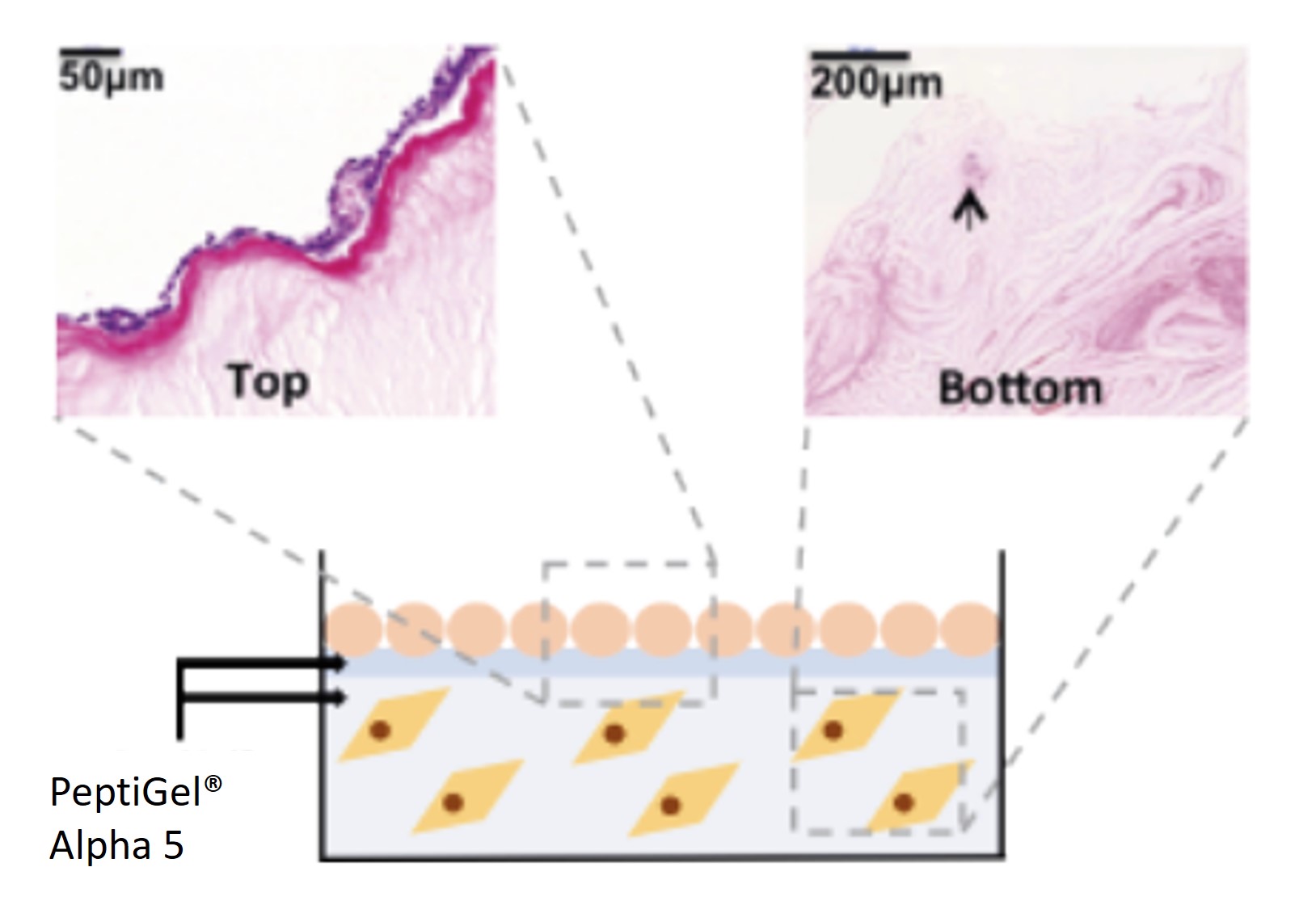Highlighted Publication
Peptide Hydrogels - A Tissue Engineering Strategy for the Prevention of Oesophageal Strictures

Abstract
Endoscopic treatment of Barrett’s oesophagus often leads to further damage of healthy tissue causing fibrotic tissue formation termed as strictures. This study shows that synthetic, self-assembling peptide hydrogels support the activity and function of primary oesophageal cells, leading to epithelialization and stratification during in vitro 3D co-culture. Following buffering in culture media, rat oesophageal stromal fibroblasts (rOSFs) are incorporated into a library of peptide hydrogels, whereas mouse oesophageal epithelial cells (mOECs) are seeded on the surface. Optimal hydrogels (PGD-AlphaProC and PGD-CGD2) support mOEC viability (>95%), typical cell morphology (cobblestone-like), and slower migration over a shorter distance compared to a collagen control, at 48 h. Positive expression of typical epithelial markers (ZO-1 and cytokeratins) is detected using immunocytochemistry at day 3 in culture. Furthermore, optimal hydrogels are identified which support rOSF viability (>95%) with homogeneous distribution when incorporated into the hydrogels and also promote the secretion of collagen type I detected using an enzyme linked immunosorbent assay (ELISA), at day 7. A 3D co-culture model using optimal hydrogels for both cell types supports a stratified epithelial layer (expressing involucrin and AE1/AE3 markers). Findings from this study could lead to the use of peptide hydrogels as a minimally invasive endoscopic therapy to manage oesophageal strictures.

